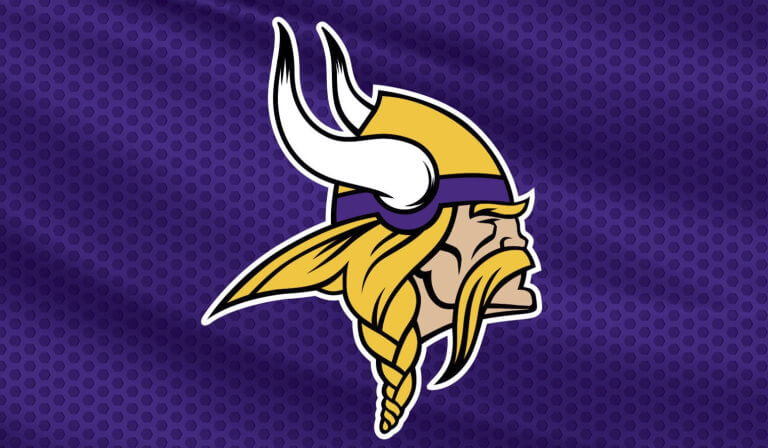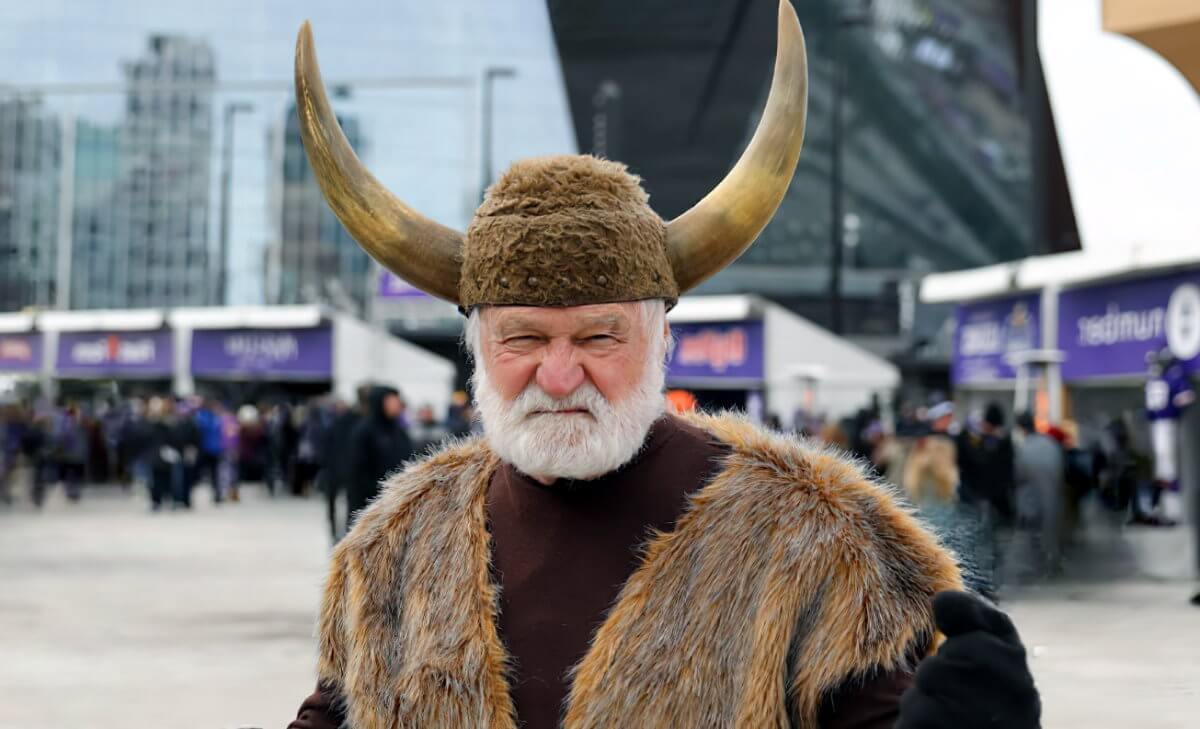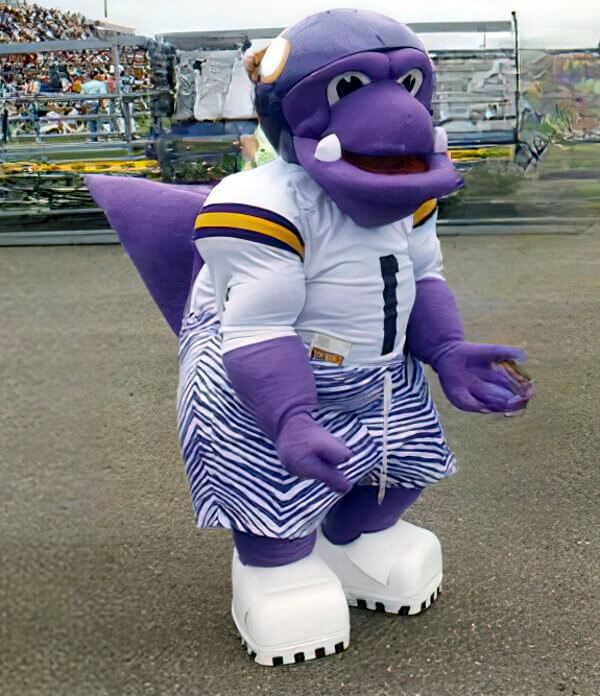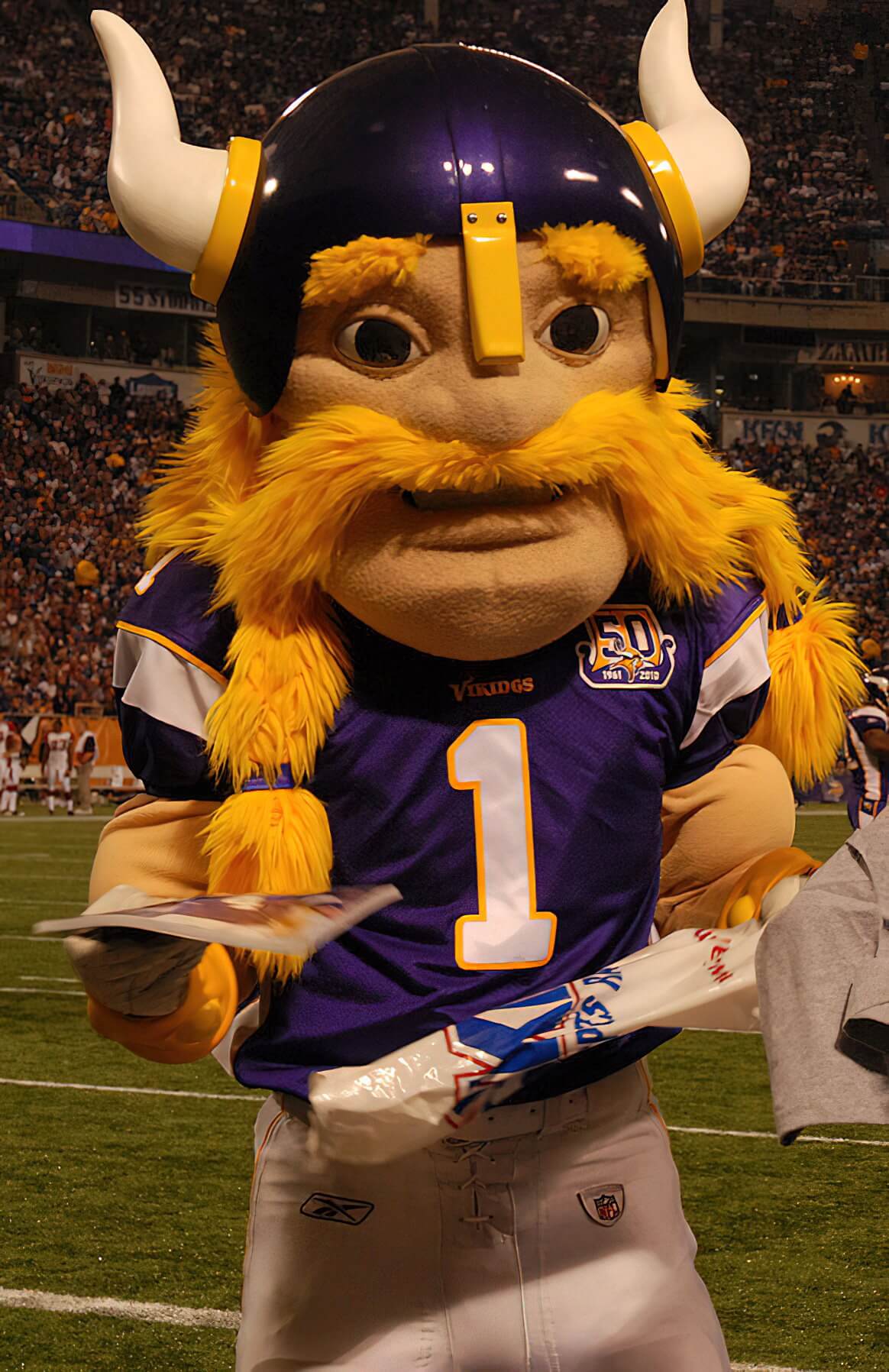The Minnesota Vikings have a rich history of mascots that have entertained and inspired fans throughout the years. From the accidental debut of Hub Meeds to the current mascot, Viktor the Viking, and the iconic Ragnar, each character has left its mark on the team’s legacy. This article will take you on a journey through the history of the Vikings’ mascots and the memorable moments they’ve provided to fans.
Table of Contents:
Hub Meeds
Ragnar
Vikadontis Rex
Viktor the Viking
The Accidental Mascot: Hub Meeds
Many long-time Vikings fans will undoubtedly recall Hub Meeds, the team’s first mascot. Meeds made his unexpected debut as the Vikings’ mascot at Super Bowl IV in 1970. Along with his brother, Meeds attended the game at Tulane Stadium in New Orleans to watch the Vikings face the Kansas City Chiefs. Dressed in costume, the two were mistaken for official team mascots by stadium personnel, who allowed them onto the field. Security was not as stringent back then, which contributed to the mix-up. Following this serendipitous event, Meeds approached the team with a request to become their permanent mascot. He assumed this role until 1992 and even donned the costume one last time for the Metrodome’s final game in 2013.
The Purple Dinosaur: Vikadontis Rex
Vikadontis Rex, a large purple dinosaur distinct from another famous purple dinosaur, served as the official mascot of the Vikings Children’s Fund for only few seasons, throughout the 1990s. However, the mascot was not well-received by the fanbase, and in 2000, the team ultimately discontinued its use.
Ragnar the Viking
Larger-than-life Viking warrior became synonymous with the team, embodying the spirit of the Vikings’ Norse heritage. Although he is no longer the official mascot, Ragnar’s legendary presence continues to inspire fans and evoke nostalgia.Ragnar, the Minnesota Vikings’ iconic mascot, has captured the hearts of football fans for decades.
A Brief History of Ragnar
Ragnar, from 1994 to 2015 was portrayed by Joseph Juranitch as the Minnesota Vikings. Juranitch was a Viking enthusiast and a natural fit for the role, with his lengthy beard, imposing presence, and enthusiasm for the team. As Ragnar, Juranitch donned traditional Viking attire, including a horned helmet, fur cape, and leather armor. His entrance to the field was marked by a custom purple motorcycle adorned with the Vikings’ logo, a spectacle that fans eagerly anticipated at every home game.
Throughout his tenure, Ragnar’s popularity soared as he became a symbol of the team’s identity. From leading the team onto the field to revving up the crowd, Ragnar’s presence was felt throughout the stadium. He also participated in numerous charitable events and community initiatives, strengthening the bond between the team and its fans.
Ragnar’s Departure
Ragnar’s tenure as the Minnesota Vikings’ mascot came to an abrupt end in 2015 when contract negotiations between Juranitch and the team failed. Reports suggest that Juranitch had requested a significant pay increase, which the Vikings were unwilling to meet. The split was met with disappointment from fans who had grown to love the burly mascot. Following Ragnar’s departure, the team introduced Viktor the Viking, a more conventional, family-friendly mascot designed to appeal to younger fans.
Impact on Fans
Ragnar’s impact on the Minnesota Vikings’ fan base cannot be overstated. As a human mascot, Ragnar was unique in the NFL, setting the Vikings apart from other teams with animal or cartoonish characters. Ragnar’s fierce, warrior-like persona and traditional Norse garb paid homage to the team’s historical roots, connecting fans with the Vikings’ rich heritage.
Ragnar was more than just a mascot; he was a symbol of camaraderie and unity for Vikings fans. His presence at games and events fostered a sense of togetherness, making fans feel like part of the Vikings family. Ragnar’s persona resonated with fans, creating a lasting connection that transcended generations.
Ragnar’s Legacy
Despite his departure, Ragnar’s legacy continues to live on in the hearts and minds of Minnesota Vikings fans. His lasting impact is a testament to the power of a well-crafted mascot in creating a strong emotional bond between a team and its supporters. Ragnar remains a beloved figure in the annals of NFL history, and his legend continues to inspire fans.
Today, many fans still reminisce about the golden era of Ragnar, recalling fond memories of his pre-game rituals, sideline antics, and infectious enthusiasm. The mascot’s absence has led to a renewed appreciation for his contributions to the team’s identity and fan culture.
Present-Day Mascot: Viktor the Viking
Being with the club since 2007, Viktor the Viking, the official mascot of the Minnesota Vikings, is more than just an entertaining character on the sidelines. His mythical backstory, rooted in Norse mythology, has captured the imagination of fans and made him a beloved figure among the Vikings faithful. The Vikings had made a few previous attempts to create a team-based mascot but ultimately settled on the Viktor concept to connect with younger fans. So far, the strategy appears to be successful, as Viktor has become a popular figure among the team’s fan base.
A Legendary Tale
According to the tale, January 28th, 960 AD marked the birth of one of the greatest Vikings to live in the Norseman Age. Rumored to be kin to Thor, the Thunder God himself, the young Viking was bestowed with the legendary war hammer, Mjolnir. Unfortunately, the Viking’s story was lost amidst the breaking surf of the mighty Atlantic Ocean over a thousand years ago – until 2007, when the mystery was finally revealed.
The legend takes us back to the height of Viking power when Thor’s chosen Viking hero set out across the ocean in search of new western lands. Odin, Thor’s father, and the chief god, enraged by Thor’s assistance to mere mortals, sought to destroy them with a violent storm. Amidst the chaos, the Viking ship was blown far off course and deep into the Great Lakes of North America.
At the frigid bottom of Lake Superior, Thor encased the young Viking, now known as Viktor, in ice, waiting for the time when he would thaw and fulfill his destiny. That time came in the summer of 2007. After thawing on the shores of Lake Superior, Viktor heard rumors of purple-clad Vikings that engaged in battle every Sunday. Excited by this news, he raced south to find these gridiron Vikings and a place called Winter Park.
Upon arrival, Viktor was surprised to learn that these Vikings battled in a game called football. Determined to join the team, he was met with disappointment as he did not make the official team roster due to his lack of experience. Despite this setback, the team recognized his spirit and asked him to remain part of the organization as the official team mascot.
Viktor’s Role as a Mascot
Viktor the Viking has since become an integral part of the Minnesota Vikings’ game day experience, delighting fans with his antics, cheering the team on to victory, and fostering a sense of unity among supporters. His mythological backstory adds depth to his character, allowing fans to connect with him on a deeper level than the average mascot.
Viktor can often be seen participating in community events and charitable initiatives, further solidifying the bond between the team and its fans. His presence has also helped fill the void left by the departure of Ragnar, the team’s previous mascot.
The Future of NFL Mascots
Ragnar’s story highlights the importance of mascots in the NFL and their ability to connect with fans on an emotional level. As teams look to create and maintain a strong fan base, they must consider the role of their mascots in building a sense of community and pride among their supporters.
Mascots like Ragnar serve as a reminder that the most successful team representatives are not just entertaining characters, but embodiments of the team’s spirit and history. Future mascots must strike a balance between engaging younger fans and honoring the traditions that older supporters hold dear.




